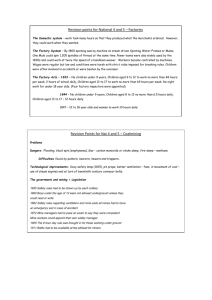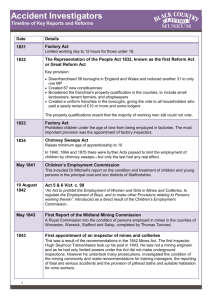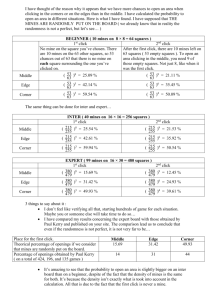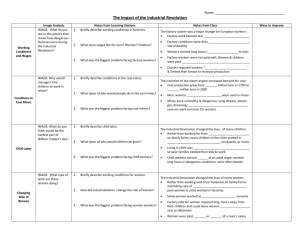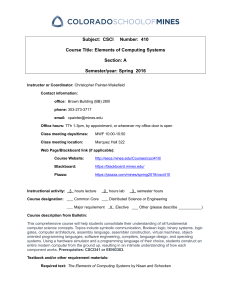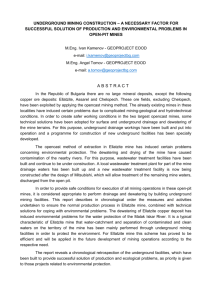4F Factories and Mines Acts
advertisement
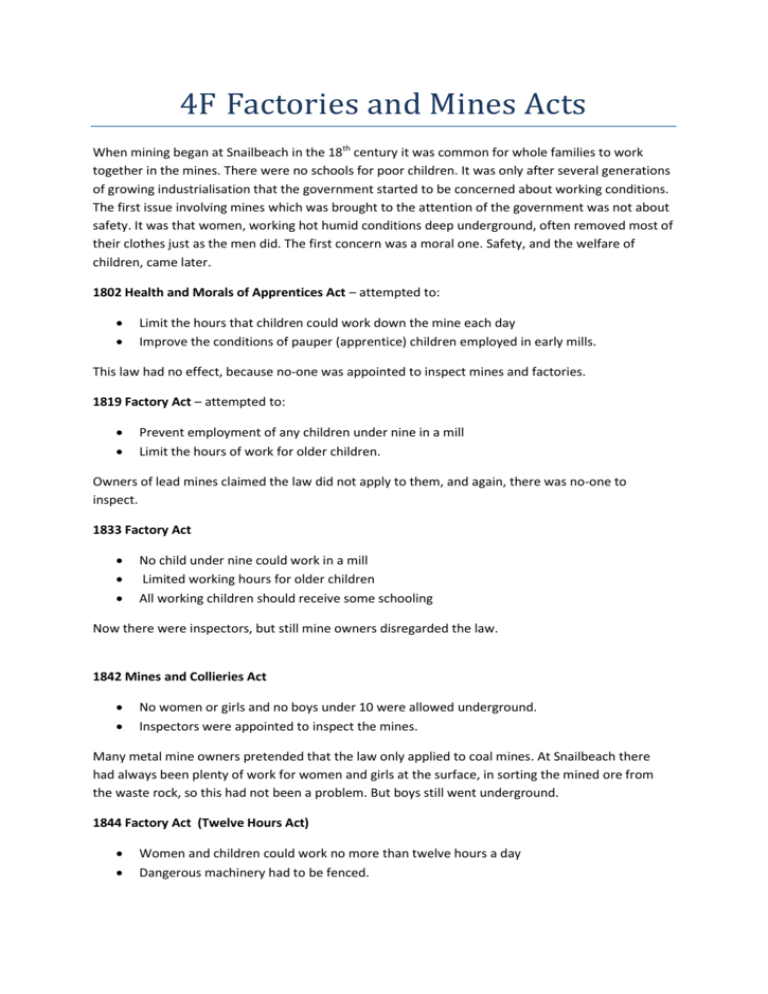
4F Factories and Mines Acts When mining began at Snailbeach in the 18th century it was common for whole families to work together in the mines. There were no schools for poor children. It was only after several generations of growing industrialisation that the government started to be concerned about working conditions. The first issue involving mines which was brought to the attention of the government was not about safety. It was that women, working hot humid conditions deep underground, often removed most of their clothes just as the men did. The first concern was a moral one. Safety, and the welfare of children, came later. 1802 Health and Morals of Apprentices Act – attempted to: Limit the hours that children could work down the mine each day Improve the conditions of pauper (apprentice) children employed in early mills. This law had no effect, because no-one was appointed to inspect mines and factories. 1819 Factory Act – attempted to: Prevent employment of any children under nine in a mill Limit the hours of work for older children. Owners of lead mines claimed the law did not apply to them, and again, there was no-one to inspect. 1833 Factory Act No child under nine could work in a mill Limited working hours for older children All working children should receive some schooling Now there were inspectors, but still mine owners disregarded the law. 1842 Mines and Collieries Act No women or girls and no boys under 10 were allowed underground. Inspectors were appointed to inspect the mines. Many metal mine owners pretended that the law only applied to coal mines. At Snailbeach there had always been plenty of work for women and girls at the surface, in sorting the mined ore from the waste rock, so this had not been a problem. But boys still went underground. 1844 Factory Act (Twelve Hours Act) Women and children could work no more than twelve hours a day Dangerous machinery had to be fenced. 1847 Factory Act (Ten Hours Act) Women and children could work no more than ten hours a day. 1864 Kinnaird Commission Investigated the dangers in metal mines, and began to recognise the effects of silicosis and lead poisoning which was shortening the lives of miners. 1867 Factory Act Extended factory laws to all other places of work, not just woollen or cotton mills. 1872 Metal Mines Regulation Act The first proper inspections of lead mines in Shropshire. Concerns about poor barrack accommodation, and climbing long ladders underground. Encouragement of supplying changing rooms for miners. No more than four pounds of gunpowder to be taken into a mine. 1878 Factories and Workshops Act No children under 10 were allowed to work. Compulsory schooling was introduced for all children. It was still normal for children over 10 to go out to work. 1900 Mines (Prohibition of Child Labour) Act Minimum age for underground employment of boys raised to 13 years. Regulated employment of women and children at the surface. Control of dusty environments. Fencing dangerous machinery. Sanitary arrangements. 1905 Rules on underground and surface sanitary provisions at mines, and prohibition of dry drilling in siliceous rock It had been found that new fatal diseases had been introduced into mines from insanitary conditions. The first recognition of silicosis as an industrial disease.
